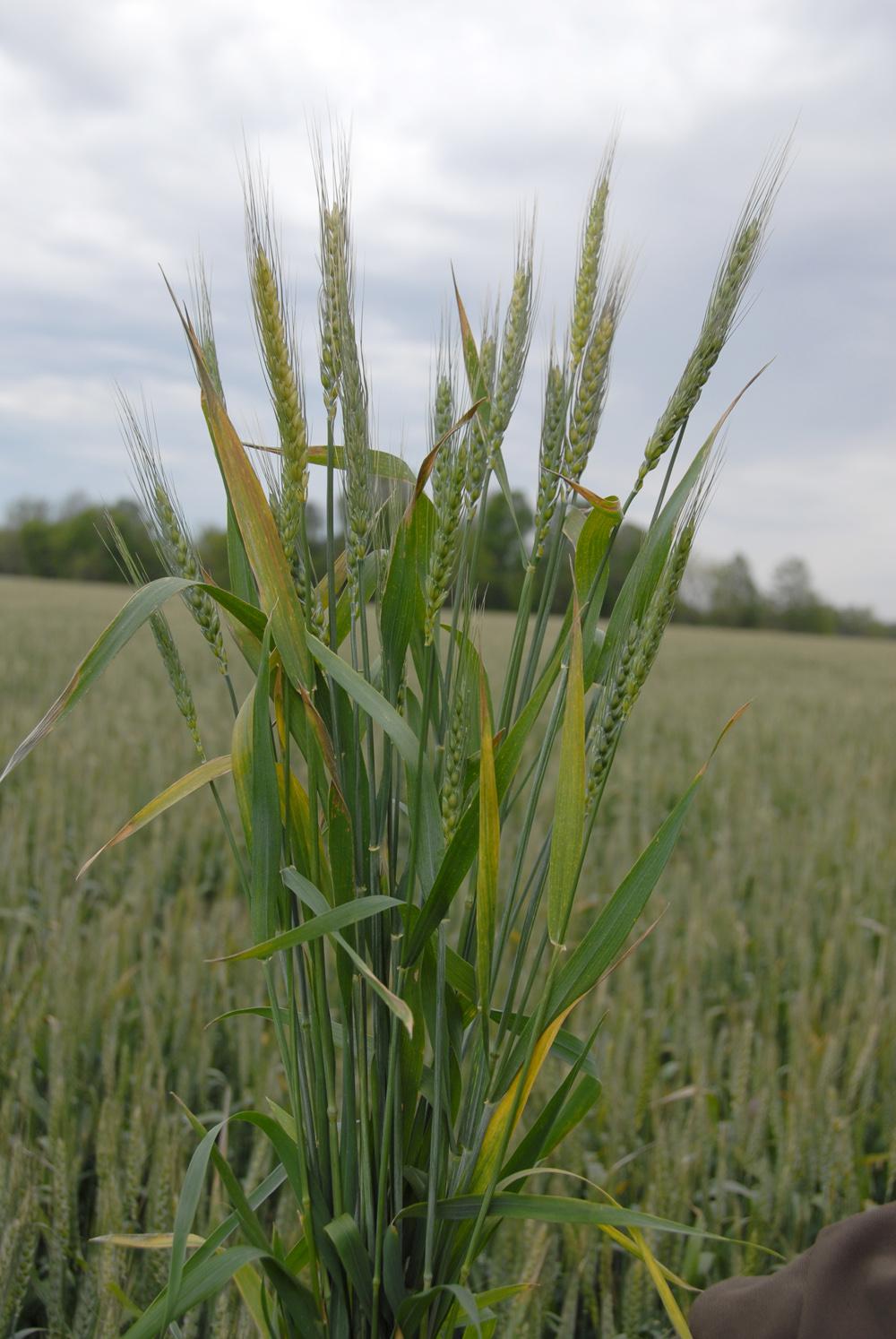Information Possibly Outdated
The information presented on this page was originally released on April 13, 2007. It may not be outdated, but please search our site for more current information. If you plan to quote or reference this information in a publication, please check with the Extension specialist or author before proceeding.
Wheat shows damage from Easter freeze
MISSISSIPPI STATE -- Mississippi's wheat that thrived in March's balmy weather experienced major damage during two nights of freezing temperatures over the Easter weekend.
Erick Larson, small grains specialist with Mississippi State University's Extension Service, said the early warm temperatures had advanced the maturity of the crop and made it more vulnerable to the freeze. Wheat was about two weeks ahead of schedule.
“Wheat's sensitivity to freezing temperatures depends on the crop's growth stage, and unfortunately, early heading stages are extremely sensitive to freezing temperatures,” Larson said. “It is most sensitive about a week after head emergence during the flowering stage.”
Larson said the hardest freeze in Mississippi occurred on a line from the Clarksdale area down to around Columbus.
“The good news is that the bulk of Mississippi's wheat grows in the Delta below that line and may not experience significant losses,” Larson said. “The extent of freeze injury depends on the actual temperature in the crop canopy and how long temperatures remain at freezing. Damage also can be influenced somewhat by topography and wind.”
Art Smith, Extension area agronomy agent based in Tunica County, said wheat growing in bottomland or low-lying areas appears to have sustained more damage. The impact on wheat that had headed or was near heading was clear within a couple of days.
“Fields that were heading will have significant losses, but we still need several more days before we can start predicting yield losses,” Smith said. “Wheat that was in the boot stage (had not headed) seems to have weathered the cold well.”
Smith said the damage is especially disappointing because of how good the crop was looking around the first of April.
“Before the freeze, we had one of the best wheat crops in recent memory, maybe a 70- to 80-bushel-per-acre potential. Farmers had done a good job of establishing stands with appropriate weed control,” Smith said. “Now I'm afraid some of those fields have lost up to 50 percent or more of their yield potential.”
Smith, Larson and other Extension agents will be working closely with growers to assess the damage and determine future management decisions. Growers who were already planning to double-crop their fields with soybeans may choose to abandon heavily damaged wheat and benefit from earlier-planted soybeans.
“Now is a better time to plant soybeans than if they wait until after wheat harvest,” Larson said. “Soybean yield potential is much better when planted early.”
Wheat was not the only crop damaged when temperatures plummeted. The small grains specialist said corn “looks terrible” above ground, but plants should be able to recover generally from the freeze because the growing point was protected below the soil's surface. No yield losses are expected unless fields suffer some stand reduction from the freeze.
“Sunny, warm days after the freeze should help corn resume growth and regenerate new leaf tissue above ground,” Larson said. “Growers just need to wait and give the plants time to recover.”




